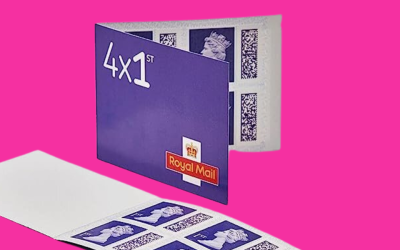In the wake of continuous upheavals since 2016, including Brexit, the COVID-19 pandemic, the war in Ukraine, and the escalating cost-of-living crisis, consumers find themselves navigating uncertain waters. With each new challenge, confidence dwindles, leaving individuals feeling increasingly vulnerable and in need of reassurance. In such times, the role of brands in providing a sense of security and trust becomes paramount.
The Decline in Consumer Confidence:
Marketreach’s and WARC’s latest report “The attention advantage: Exploring the impact of mail in an attention-scarce world” depicts a significant trend: people are experiencing a notable decrease in confidence, both in the economy and in their own financial stability. This lack of confidence extends to their purchasing decisions, with consumers seeking greater assurance and reliability from the brands they interact with.
The Importance of Trustworthy Brands:
Amidst this backdrop of uncertainty, the importance of trust in brand-consumer relationships cannot be overstated. Consumers are gravitating towards brands perceived as reliable and trustworthy, viewing them as beacons of stability in tumultuous times. As this report reveals, a staggering 71% of global consumers now prioritise trust in the brands they buy or use, emphasising the need for brands to earn and maintain this trust through their communications.
Implications for Brand Communications:
In light of these findings, brands must adapt their communication strategies to meet the evolving needs of consumers. Rather than relying solely on digital marketing tactics, brands must focus on building genuine connections founded on trust and authenticity. This entails delivering clear, honest, and transparent messaging through channels that deliver greater trust and provide consumers with the assurance they seek.
Strategies for Building Consumer Confidence:
Honesty and Transparency: Communicate openly and transparently about products, services, and business practices, addressing any concerns or uncertainties consumers may have.
Consistency: Maintain consistency in messaging and branding across all channels to reinforce the brand’s reliability and trustworthiness.
Empathy and Understanding: Demonstrate empathy and understanding towards consumers’ challenges and anxieties, showing a genuine commitment to their well-being.
Quality Assurance: Prioritise quality in products and services, delivering on promises, and exceeding expectations to build confidence and loyalty.
Accessibility: Make information easily accessible and readily available to consumers, empowering them to make informed decisions with confidence.
Channels: Opting for a mix of digital and physical channels. Mail is considered a highly trusted channel: 71% of people say they completely trust the mail they receive, and it’s not just for one age group; it’s for all age groups.
In an era marked by uncertainty and apprehension, brands have a unique opportunity to serve as beacons of trust and stability for consumers. By prioritising honesty, transparency, and reliability in their communications, brands can foster greater confidence and loyalty among consumers, ultimately building stronger and more resilient relationships in the face of adversity. As we navigate these challenging times together, the role of brands in providing reassurance and assurance to consumers becomes increasingly vital.
If you are seeking to develop a communications strategy that includes physical mail communications, we are here to help. Get in touch with a member of our expert team who is ready to assist.




